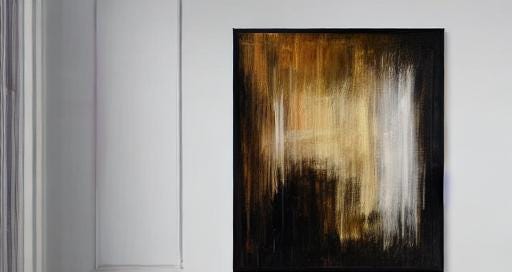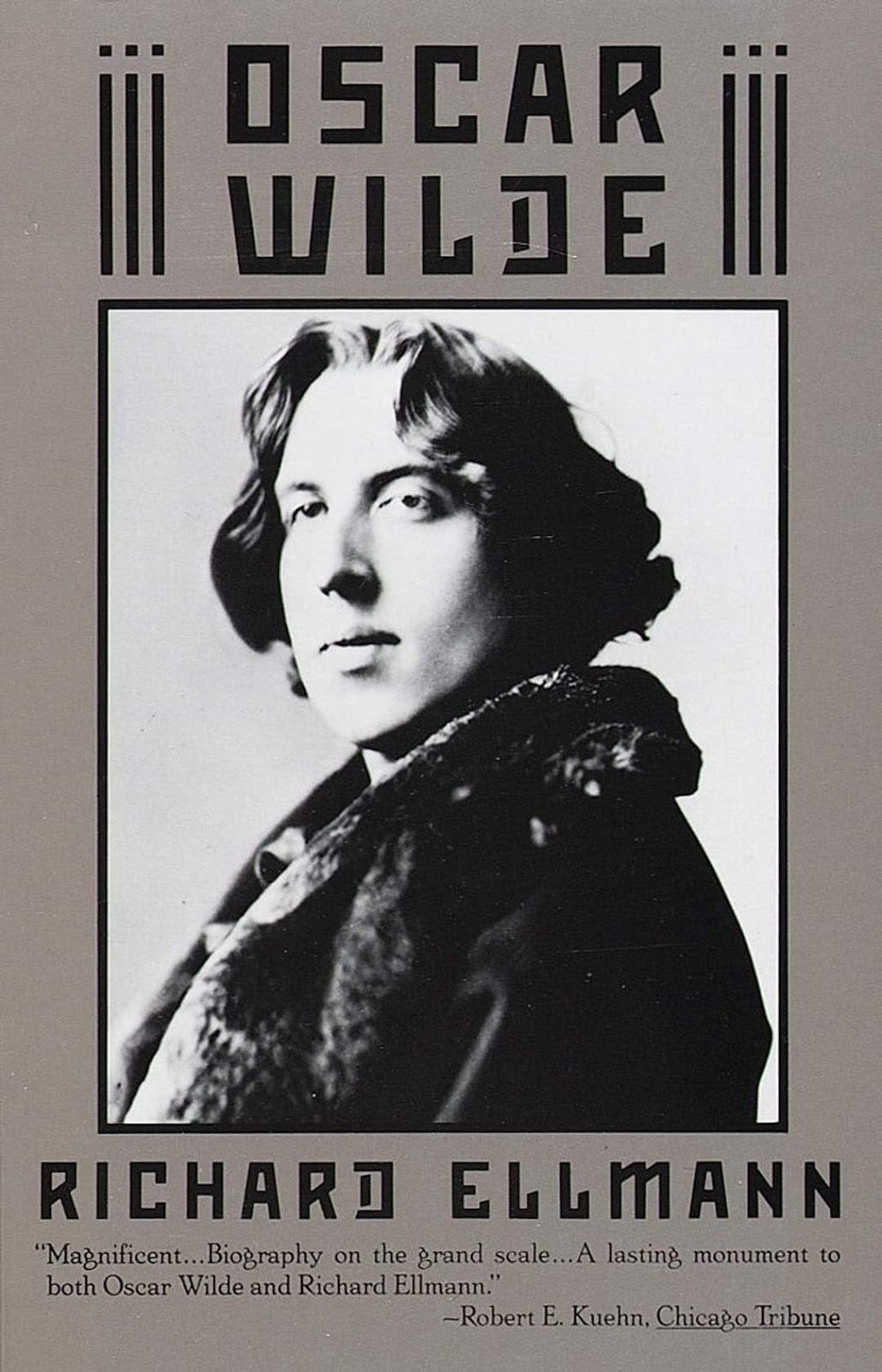"The life of mere sensation is uncovered as anarchic and self-destructive"
Oscar Wilde (1988) by Richard Ellmann
....Both in its magazine form and in its form as a separate novel, Dorian Gray has faults. Parts of it are wooden, padded, self-indulgent. No one could mistake it for a workmanlike job: our hacks can do that for us. But its continual fascination teaches us to judge it by new standards. Wilde made it elegantly casual, as if writing a novel were a diversion rather than ‘a painful duty’ (as he characterized Henry James’s manner). The underlying legend, of trying to elicit more from life than life can give, arouses deep and criminal yearnings. These contrast with the polish of English civilization at its verbal peak, and create a tension beyond what the plot appears to hold. Wilde put into the book a negative version of what he had been brooding about for fourteen years and, under a veil, what he had been doing sexually for four. He could have taken a positive view of reconsidered aestheticism, as he would in ‘The Critic as Artist’ and ‘The Soul of Man Under Socialism,’ as he had already done in ‘The Decay of Lying.’ Instead, Dorian Gray is the aesthetic novel par excellence, not in espousing the doctrine, but in exhibiting its dangers. Pater’s refurbishing of aestheticism in the late 1860s and early 1870s had been followed by a series of attacks upon it: by James in Roderick Hudson, 1876; by Mallock in The New Republic, 1877; by Gilbert and Sullivan in Patience, 1881; and by Punch and many others. In 1890 it would have been old hat for Wilde to offer an unequivocal defense. What he did instead was to write the tragedy of aestheticism. It was also premonitory of his own tragedy, for Dorian has, like Wilde, experimented with two forms of sexuality, love of women and of men. Through his hero Wilde was able to open a window into his own recent experience. The life of mere sensation is uncovered as anarchic and self-destructive. Dorian Gray is a test case. He fails. Life cannot be lived on such terms. Self-indulgence leads him to vandalize his own portrait, but this act is a reversal of what he intends and he discloses his better self, though only in death. Wilde’s hero has pushed through to the point where extremes meet. By unintentional suicide, Dorian becomes aestheticism’s first martyr. The text:
Drift beautifully on the surface, and you will die unbeautifully in the depths. In response to critical abuse, Wilde added the preface, which flaunted the aestheticism that the book would indict. Dorian Gray is reflexive in the most cunning way, like its central image.
Dorian progresses, or regresses, to art and back to life. Everything in the book has an aesthetic and a clandestine quotient, in terms of which it can eventually be measured. The portrait of Dorian is executed by Basil Hallward just at the moment when Lord Henry is fishing for Dorian’s soul. Although Wilde states in the book’s preface, ‘To reveal art and conceal the artist is art’s aim,’ Hallward fears that the portrait is too revealing of his love for Dorian, as Dorian later fears that it is too revealing of himself. Wilde the preface-writer and Wilde the novelist deconstruct each other. Dorian offers a Faustian pact (with no visible devil) that he will exchange places with his portrait, to preserve himself as a work of art.
But he is not to achieve timelessness easily. His role of invulnerable and detached profligate is challenged by love. His attachment to Sibyl Vane is an experiment in the aesthetic laboratory. The affair ends as badly as Faust’s with Gretchen, but Sibyl Vane differs from Gretchen in being an actress. She plays Shakespearean heroines, so Dorian is able to aestheticize her in his imagination. ‘I have been right,’ he congratulates himself, ‘to take my love out of poetry and to find my wife in Shakespeare’s plays.’ Put to the test, however, Sibyl is no mere performer; her fatal weakness in his eyes is that she values life above art. She loses her capacity to act because, instead of preferring shadows to reality as she once did, she is drawn by love to prefer reality. She voices the heresy that ‘all art is but a reflection’ of that reality, and Dorian excommunicates her with the cruel words ‘Without your art you are nothing.’ Like Faust’s Gretchen, she poisons herself in despair. And even her death is rendered aesthetic, first by Lord Henry and then by Dorian. Lord Henry finds that she has played out her part, ‘a strange lurid fragment from some Jacobean tragedy,’ and that ‘The girl never really lived, and so she has never really died.’ Dorian agrees with the same glibness, ‘She passed again into the sphere of art.’ Only her brother, and the reader, are left to mourn, and to judge. Sibyl is the opposite of Dorian. She gives up the pretense of art so as to live entirely artlessly in this world, only to commit suicide. Dorian tries to give up the causality of life and to live in the deathless (and lifeless) world of art, only to commit suicide too.
Dorian commits the primal sin against love, and it leads to his second crime. Basil Hallward discovers the secret of the portrait, and urges him to accept the consequences. For this insistence upon the moral causality of life, Basil too has to die. Dorian manages the murder, and the disposal of the body, as if De Quincey were right about murder’s being one of the fine arts. After the murder he sleeps insouciantly; next morning he chooses his tie and rings with special care, and reads Gautier’s Emaux et camées, finding in its chiseled quatrains some of the reassuring impersonality that Pound and Eliot were to derive from the same book during the First World War. The friend who helps to dispose of the body commits suicide, like Sibyl. What few twinges Dorian feels he obliterates in an opium den.
The first chapters deal with Dorian’s infection by Lord Henry, the later ones with his poisoning by a book. Wilde does not name the book, but at his trial he conceded that it was, or almost was, Huysmans’s A Rebours. Of course he also had in mind a book which preceded Huysmans’s, Pater’s Studies in the History of the Renaissance. In the first draft he gave the mysterious book a name, Le Secret de Raoul by Catulle Sarrazin. This author was a blend of Catulle Mendès, whom he had known for some years, and Gabriel Sarrazin, whom he met in September 1888, and the name of ‘Raoul’ came from Rachilde’s Monsieur Vénus. To a correspondent he wrote that he had played ‘a fantastic variation’ upon A Rebours, and some day must write it down. The references in Dorian Gray to specific chapters of the unnamed book are deliberately inaccurate. Dorian is said to relish especially the seventh chapter, in which the hero fancies himself as Tiberius, Caligula, Domitian, and Elagabalus, and the eighth and ninth chapters, in which Renaissance crimes are described.
Huysmans’s book has none of these: Des Esseintes shows no interest in imperial power, and Wilde borrowed the Renaissance scenes not from Huysmans but from his friend John Addington Symonds’s Renaissance in Italy. 17 In fact, the mythical book which so affects Dorian, the pseudo— A Rebours, reads as if it had been plagiarized from Wilde. The hero is said to be alarmed ‘by the sudden decay of a beauty that had once, apparently, been so remarkable.’ Huysmans never describes Des Esseintes as beautiful, nor as concerned about no longer being so. Dorian says the hero has a dread of mirrors; Des Esseintes has none, though he does read a passage in Mallarmé’s ‘Hérodiade’ where this dread is expressed by her. The more genuine points of comparison are the cultivation of artificial pleasures and the alternations of exaltation and abasement. Though Wilde borrowed the idea for artificial-sensation seeking from Huysmans, he gives Dorian a more specialized interest in jewelry, for which, it appears, no French source was required. He borrowed all the details from South Kensington Museum pamphlets on musical instruments, precious stones, embroidery and lace, and textile fabrics. 18
CHAPTER XII The Age of Dorian
Oscar Wilde (1988) by Richard Ellmann




